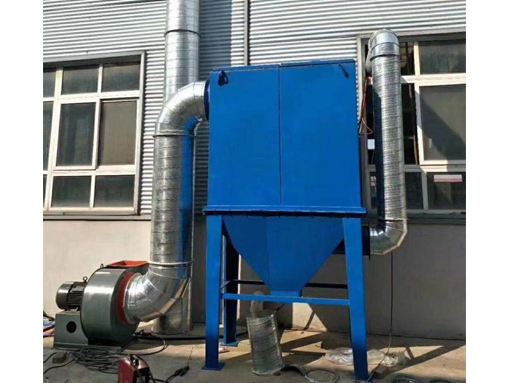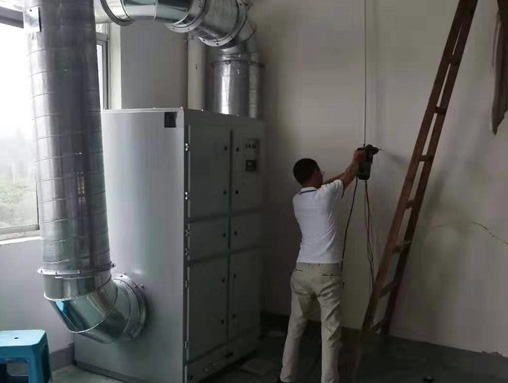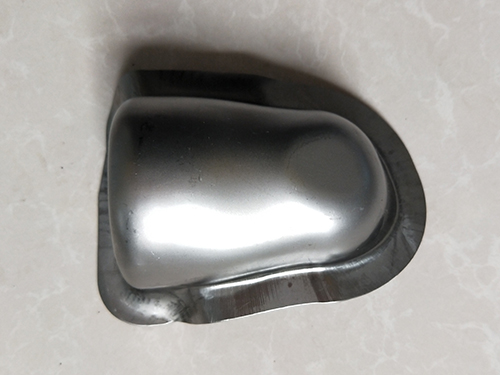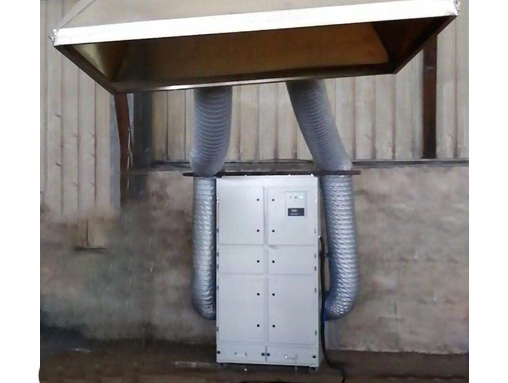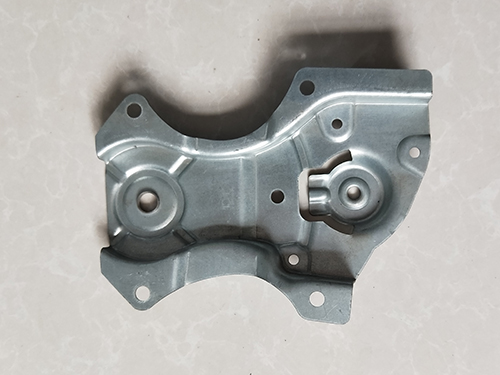The gap between China's automotive stamping die technology and foreign countries
The automotive stamping parts factory has stamping die design and manufacturing technology, and die design is actually divided into three parts: stamping process design, die surface design, and structural design. Traditional stamping process design in China uses process drawings or DL drawings, and its die surface design is very rough. The process modeling guided by such drawings relies on manual trimming and manufacturing processes in the later stage, resulting in a large amount of manual trimming and extended cycle for mold manufacturing. The content and aspects of these three designs are different. The workflow of the mold enterprise is to first design the stamping process and then guide the mold surface design and mold structure design, which are done by different people with clear division of labor. Mold companies complete the design of mold surfaces through computer surface modeling during the design phase. The result of mold surface design can reduce the time required for surface processing, pliers repair, and mold testing, and its role is significant. For example, designing various stretching ribs for different feed rates, different cross-sections of stretching ribs in different parts of the same set of molds, anti rebound and over stretching treatment, smaller pressing surface design, uneven gap design between convex and concave molds, etc. In contrast, domestic mold design is still in the stage of structural design, and mold surface design has not received much attention. The mold surface is actually completed by the day after tomorrow, and the backwardness of mold design has led to the backwardness of manufacturing.
In addition, in terms of the application of sheet metal forming analysis technology, China's metal stamping parts; There is also a considerable gap between enterprises and. At present, many stamping mold companies (such as Ogihara, Fuji, Toyota, etc.) have established analysis result libraries for various typical parts of the entire vehicle body.
For a new car model, if there is not much change in formability, only the original process is referenced without analysis, and only the new shape is analyzed for sheet metal forming, establishing an analysis result library is a good method. Looking at the current situation in China, on the one hand, the division of labor among stamping mold factories is very low, and various parts will encounter difficulties, making it difficult to have ready-made experience. It seems that sheet metal forming technology is more needed; On the other hand, due to low technical level and poor support environment (such as difficulty in mastering sheet parameters, friction coefficients, etc.), it is also very difficult for mold factories to achieve practicality. Even if an analysis company is established, considering factors such as user quantity, cycle, and price, it may be too high and too low. At present, the actual application effect of this technology in China is still difficult to determine. The experience accumulation mechanism for stamping mold enterprises includes unified management of data, group discussions on sketch design, multi departmental collective review of drawings, and frequent addition and modification of design standards and specifications.
The experience accumulation mechanism is the main means for mold enterprises to continuously improve their mold surface design. For example, after the mold processing is completed, the mold surface generally does not need to be ground, the cutting edge does not need to be aligned with the gap, and the fitter is only responsible for installation. During the initial mold trial, the mold cannot be repaired or adjusted casually. The mold surface designer is present for debugging, and any defects during the initial mold trial need to be recorded. The later results of the adjustment, such as the stretching bead, the variation of the stretching fillet, and the asymmetry of the symmetrical parts, still need to be measured on site. The accumulation, organization, analysis, and archiving of these materials are all accumulated experience in mold design and can be added to the next design at any time. For the structural design of molds, the gap between China's stamping parts enterprises and others is mainly reflected in the following aspects.
(1) 3D solid design
The mold design of mold enterprises has all adopted three-dimensional solid design.
a) The separation of membrane design and structural design: In structural design, the mold surface is only illustrative and can be used for solid machining, not for mold machining. This division of labor simplifies the design of mold entities, which is crucial for the success or failure of 3D entity design.
b) Cancel 2D drawings: Dimensioning accounts for approximately 40% of the drawing workload, and not drawing traditional 2D drawings saves this part of the workload. Instead, three-dimensional diagrams and plan diagrams with annotated dimensions are provided according to the needs of each process.
c) Standardized design: The 3D solid design adopts a building block style design, relying on 3D standard parts and typical structure libraries to standardize the mold structure, transforming the two-dimensional drawing concept into a three-dimensional layout. At the same time, a large number of similar mold structures were borrowed, and after simple editing and modification, a new mold design was completed. For designers, this is a conceptual revolution. If they still stick to the old ways of drawing a plan to establish a shape, the advantages of 3D design will become a burden and the efficiency will be too low.
d) Interference check: In two-dimensional design, designers often do not establish a three-dimensional mold image, and can only rely on cross-sectional views for complex spatial problems. Once experience is insufficient and consideration is not thorough, spatial interference is inevitable. The more direct advantage of 3D solid design is its intuitive and convenient interference inspection, and even the ability to perform motion interference analysis. A long-standing problem in 2D graphic design has been easily solved in the face of solid design.
e) Simplifying complexity in physical design: Physical design is directly oriented towards manufacturing, and its complexity is determined by processing needs, without considering human viewing habits. For example, in the chamfering of castings, the concave corners are completed by cutting tools during processing, and the convex corners are manually trimmed, which does not need to be done in design; For example, standard parts, which are purchased parts, can also be transformed into schematic simple geometric shapes in design. There are still many design tasks that are actually completed through subsequent process specifications, such as the position of screw holes, the shape of inserts, etc. It is more economical to design according to processing needs.
f) Semi automatic design: Based on physical design, mold companies have developed functional auxiliary programs for typical and highly standardized molds such as drawing dies, achieving semi-automatic design. For example, the design of the drawing die structure is usually entrusted to novice or female employees, and designing a set of molds takes less than a week for all the work.
(2) CNC machining
The first purpose of solid design is to use numerical control processing for casting foam solid mold. The numerical control processing production of the solid model is completed through the process editing of the solid model (such as the machining allowance of the machining surface, the layered editing of the model, etc.) without going through several processes such as numerical control programming, foam blank blanking, numerical control processing, manual bonding and trimming. The numerical control production of the solid model directly benefits from the solid design, and improves the precision of the casting, which brings advantages for the subsequent processing.
(3) CNC machining of structural surfaces
The mold construction surface refers to the machined surfaces other than the mold surface, such as guide surfaces, insert mounting surfaces, screw holes, and other surfaces that need to be machined. These are all produced through programming and CNC machining. The solid design has brought the possibility of CNC programming and machining for the construction surface of the mold. The programming of surface machining can improve machining efficiency, reduce on-site human errors, and enhance the automation level of machining. Of course, to achieve this, in addition to physical design, a lot of work needs to be done, such as automatic tool alignment, tool management, processing parameters, programming experience, and so on. The gap between domestic mold companies and others in this regard is that without these foundations, programming and processing of structural surfaces is impossible.
Compared with castings and forgings, metal stamping parts have the characteristics of thin, uniform, light, and strong. Stamping can produce workpieces with reinforcing ribs, ribs, undulations or flanges that are difficult to manufacture by other methods, in order to improve their rigidity. Due to the use of molds, the precision of the workpiece can reach micrometer level, and the repetition and specifications are consistent, which can punch out holes, protrusions, etc. Hardware stamping parts need to be properly processed during production to avoid corrosion during use. There are six main methods:
1. Coating with cement mortar lining can improve the ability of stamping parts lining.
2. Preheating the stamped parts before painting the asphalt paint coating can improve the adhesion of the asphalt paint and accelerate drying.
3. Epoxy coal tar coating is a two-component coating with high adhesion and a very smooth surface.
4. Polyurethane coating is a new type of green coating developed to meet environmental protection needs, with good compatibility.
5. Aluminate cement coating or sulfate cement coating, both of which are suitable for the interior of stamped parts to improve their resistance to corrosion.
6. Epoxy ceramic lining has corresponding limitations in use due to its difficult manufacturing process and high cost. It has high adhesion and smoothness, and is a type of stamping coating.
